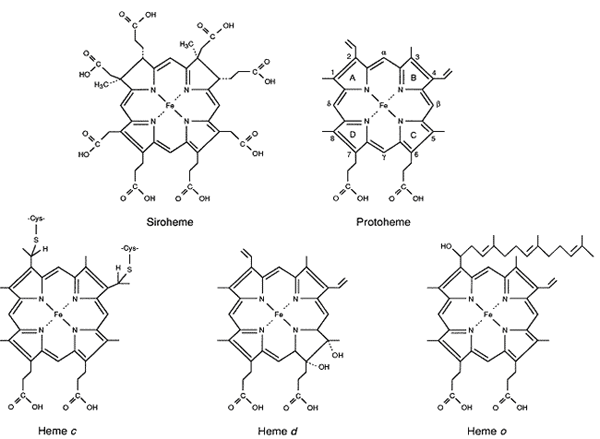Hemes and Chlorophylls:
A haem British English or heme American English is a prosthetic group which consists of an iron ion contained in the middle of a huge heterocyclic organic ring known as a porphyrin. Not all porphyrins hold iron, but a substantial fraction of porphyrin-containing metalloproteins have heme as their prosthetic group; these are called as hemoproteins. Hemes are most generally recognized in their presence as components of hemoglobin like the red pigment in blood but they are also components of a number of other hemoproteins.
Chlorophyll (also chlorophyl) is a green pigment developed in cyanobacteria and the chloroplasts of plants and algae. Chlorophyll is a very important biomolecule, critical in photosynthesis that permits plants to absorb energy from light. Chlorophyll absorbs light most powerfully in the blue portion of the electromagnetic spectrum, followed by the red portion. Moreover, it is a poor absorber of green and near-green portions of the spectrum, therefore the green color of chlorophyll-containing tissues. The Chlorophyll was first isolated through Pierre Joseph Pelletier and Joseph Bienaimé Caventou in the year of 1817.
